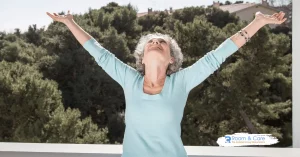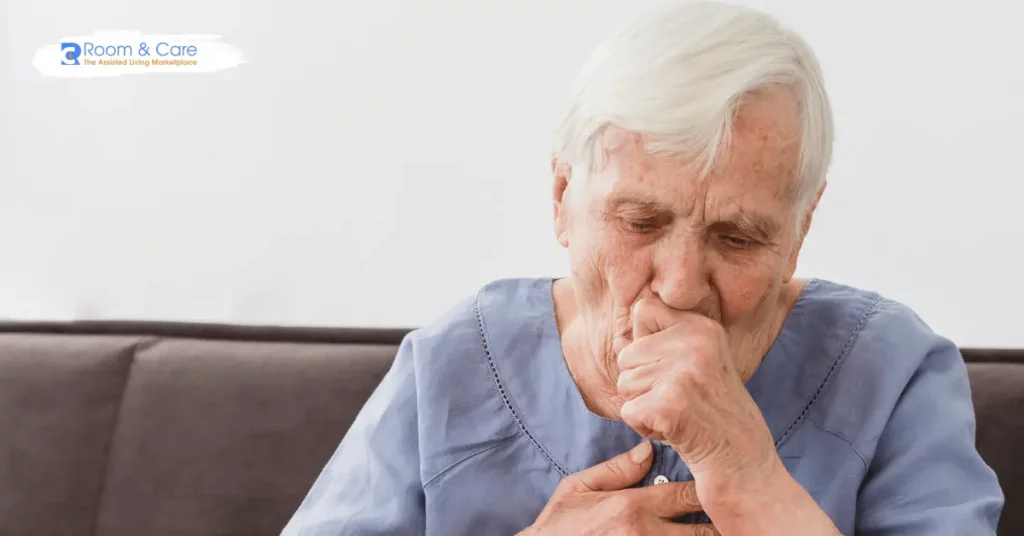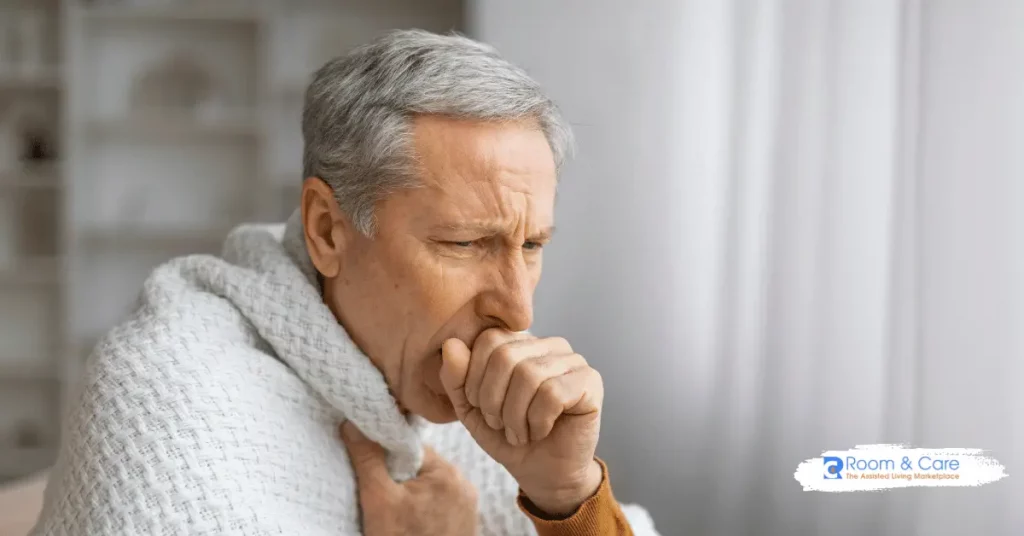

Pneumonia is a common but serious respiratory infection, especially among the elderly. Understanding the stages of pneumonia in elderly individuals is essential to ensure timely diagnosis, treatment, and care. As the condition can range from mild to severe, knowing the symptoms and stages can help caregivers, family members, and senior living communities—such as assisted living facilities, nursing homes, and adult family homes—provide the best possible support.
Pneumonia in seniors is particularly dangerous due to age-related changes in the body, weakened immune systems, and the presence of other chronic conditions. In this blog post, we’ll explore the different stages of pneumonia in the elderly, discuss crucial considerations for managing the condition, and offer practical tips to help you make informed decisions about care options. Whether your loved one resides at home, in an assisted living community, or a nursing facility, this information will help you navigate the complexities of pneumonia with confidence and clarity.
Pneumonia progresses through several stages, each with distinct symptoms and potential complications. Recognizing these stages is crucial for timely intervention and effective treatment, especially in elderly patients, who may not present symptoms as clearly as younger individuals.
The initial stage of pneumonia begins when the lungs are exposed to infectious agents like bacteria, viruses, or fungi. In elderly individuals, symptoms at this stage may be mild or even vague, often resembling a common cold or mild respiratory infection. Common early signs include a dry cough, mild fever, fatigue, and body aches. Because these symptoms can be easily mistaken for less severe illnesses, pneumonia may go undiagnosed in the early stages, which can lead to more serious complications.
In senior living communities, early detection is critical. Caregivers and healthcare providers should be vigilant in monitoring for any subtle signs of illness, especially during flu season or in cases where a resident has a known exposure to respiratory pathogens. Family members should also stay alert to any health changes and communicate concerns with the caregiving team.
As the infection progresses, the body mounts an inflammatory response to fight the invading microorganisms. In elderly patients, this response may not be as robust due to weakened immune systems, making it harder to combat the infection effectively. Symptoms during this stage become more pronounced and may include a persistent cough, increased sputum production (which may be yellow, green, or even bloody), high fever, chills, and difficulty breathing.
During this stage, elderly individuals may also exhibit confusion or changes in mental status—a common but often overlooked symptom of pneumonia in seniors. In community living settings, such as assisted living or adult family homes, it is essential to have protocols in place to monitor residents closely, especially those with pre-existing health conditions like COPD or diabetes, which can exacerbate pneumonia.
In the third stage, the infection spreads deeper into the lungs, causing the alveoli (the tiny air sacs responsible for gas exchange) to fill with pus, fluid, and inflammatory cells. This stage, known as alveolar consolidation, severely impairs lung function, making it difficult for the patient to breathe. Symptoms at this stage can be quite severe, including a high fever, severe shortness of breath, rapid breathing, a rapid heart rate, and a wet or productive cough.
This stage of pneumonia is critical and often requires immediate medical intervention. For seniors in assisted living facilities or nursing homes, swift action is essential. Having a trained medical staff on-site or access to healthcare professionals can make a significant difference in the prognosis. Quick transport to a hospital may be necessary for more intensive care, such as intravenous antibiotics, oxygen therapy, or other specialized treatments.
If pneumonia continues to progress without adequate treatment, it can lead to severe respiratory compromise. In this stage, parts of the lung may become solid due to the accumulation of infected material, greatly reducing the lung’s ability to deliver oxygen to the bloodstream. The patient may experience worsening shortness of breath, a bluish tint to the skin or lips (cyanosis), extreme fatigue, confusion, and decreased consciousness.
At this stage, pneumonia becomes life-threatening, especially for the elderly with compromised health. Immediate hospitalization is often required, and treatment may include mechanical ventilation, aggressive intravenous antibiotics, and continuous monitoring. In senior living communities, having established protocols for emergency medical care and transportation is crucial to ensure that residents receive timely and appropriate treatment.
With prompt and effective medical treatment, pneumonia can enter a recovery phase. However, recovery in elderly patients is often prolonged and may require several weeks to months. During this stage, the body gradually clears the infection from the lungs, but symptoms like fatigue, cough, and reduced lung function may persist. Elderly patients may also need ongoing support to manage other underlying conditions that pneumonia may have exacerbated.
For those in senior living communities, such as nursing homes or assisted living facilities, recovery may involve respiratory therapy, physical therapy, and close monitoring of vital signs to prevent a recurrence or complications. Senior communities play a crucial role in providing a supportive environment for recovery, with medical professionals available to offer necessary therapies and manage medications.

Managing pneumonia in elderly patients requires a comprehensive approach that addresses prevention, early detection, timely treatment, and post-recovery care. Here are key factors to consider:
Preventing pneumonia is always the best strategy, particularly in vulnerable populations like the elderly. Vaccinations, such as the pneumococcal vaccine and annual influenza shot, are highly effective in reducing the risk of pneumonia. Senior living communities should have vaccination programs for both residents and staff to minimize the chances of an outbreak.
Good hygiene practices, including regular handwashing, using hand sanitizers, and sanitizing frequently touched surfaces, are essential for preventing the spread of infectious agents. Senior communities should ensure these practices are part of their daily routine, especially in communal areas where residents may have close contact.
Early detection of pneumonia can greatly improve treatment outcomes. Caregivers, family members, and staff in senior communities should be trained to recognize the early signs and symptoms of pneumonia in elderly patients. This includes monitoring for subtle changes in health, such as increased fatigue, altered mental status, or changes in appetite, in addition to more obvious symptoms like coughing or fever.
Regular health check-ups and monitoring, particularly for residents with weakened immune systems or chronic illnesses, are essential. Prompt action can prevent the condition from progressing to more severe stages, reducing the need for intensive medical interventions.
For elderly individuals, particularly those living in assisted living or nursing homes, it is vital to coordinate care with healthcare providers. Having easy access to medical care, whether through on-site services or partnerships with local clinics and hospitals, ensures that pneumonia is managed effectively at all stages.
Family members should inquire about the medical resources and protocols available in any senior living community they are considering. Understanding how a facility handles health emergencies and manages chronic conditions can provide peace of mind and ensure the best possible care for your loved one.
Each elderly patient is unique, with their own health history, conditions, and care needs. Developing personalized care plans is essential for managing pneumonia effectively. This may include specific dietary requirements, exercise regimens, medication management, and regular medical evaluations.
Senior living communities, such as those you can find through Room and Care, should be capable of creating and adapting individualized care plans based on a resident’s specific needs. Facilities that offer personalized care tend to achieve better health outcomes and higher satisfaction among residents and families.
Recovery from pneumonia can be a long and challenging process for elderly patients. Post-recovery care is crucial and may include respiratory therapy, physical therapy, and continued medical monitoring to prevent complications or recurrence. Senior living communities should be prepared to provide or coordinate such care to support the recovery process.

Is pneumonia more severe in elderly individuals?
Yes, pneumonia tends to be more severe in elderly individuals due to weakened immune systems, the presence of chronic conditions, and age-related changes in the body. Prompt diagnosis and treatment are critical to managing the disease effectively.
How can I reduce the risk of pneumonia for my elderly loved one?
Vaccination, good hygiene practices, a healthy lifestyle, and regular medical check-ups can significantly reduce the risk of pneumonia. Make sure your loved one gets the pneumococcal vaccine and annual flu shot and practices regular hand hygiene.
What should I do if I suspect my elderly loved one has pneumonia?
Seek medical attention immediately. Early intervention is key to managing pneumonia effectively. If your loved one is in a senior living community, alert the caregivers and request a medical evaluation as soon as possible.
What kind of care do senior living communities provide for pneumonia patients?
Senior living communities, such as those found through Room and Care, offer a range of services, including regular health monitoring, access to medical professionals, emergency protocols, and post-recovery care. They provide an environment that supports recovery and helps prevent further complications.
Understanding the stages of pneumonia in elderly patients and recognizing the risks involved are essential to ensuring proper care and treatment. Senior living communities, such as assisted living facilities, nursing homes, and adult family homes, play a pivotal role in providing comprehensive care throughout all stages of pneumonia, from prevention to post-recovery support.
By staying informed, recognizing symptoms early, and choosing the right senior living community, you can significantly improve outcomes for your loved ones. Room and Care offers a range of facilities with no referral fees, ensuring you have direct access to the best care options without added costs.